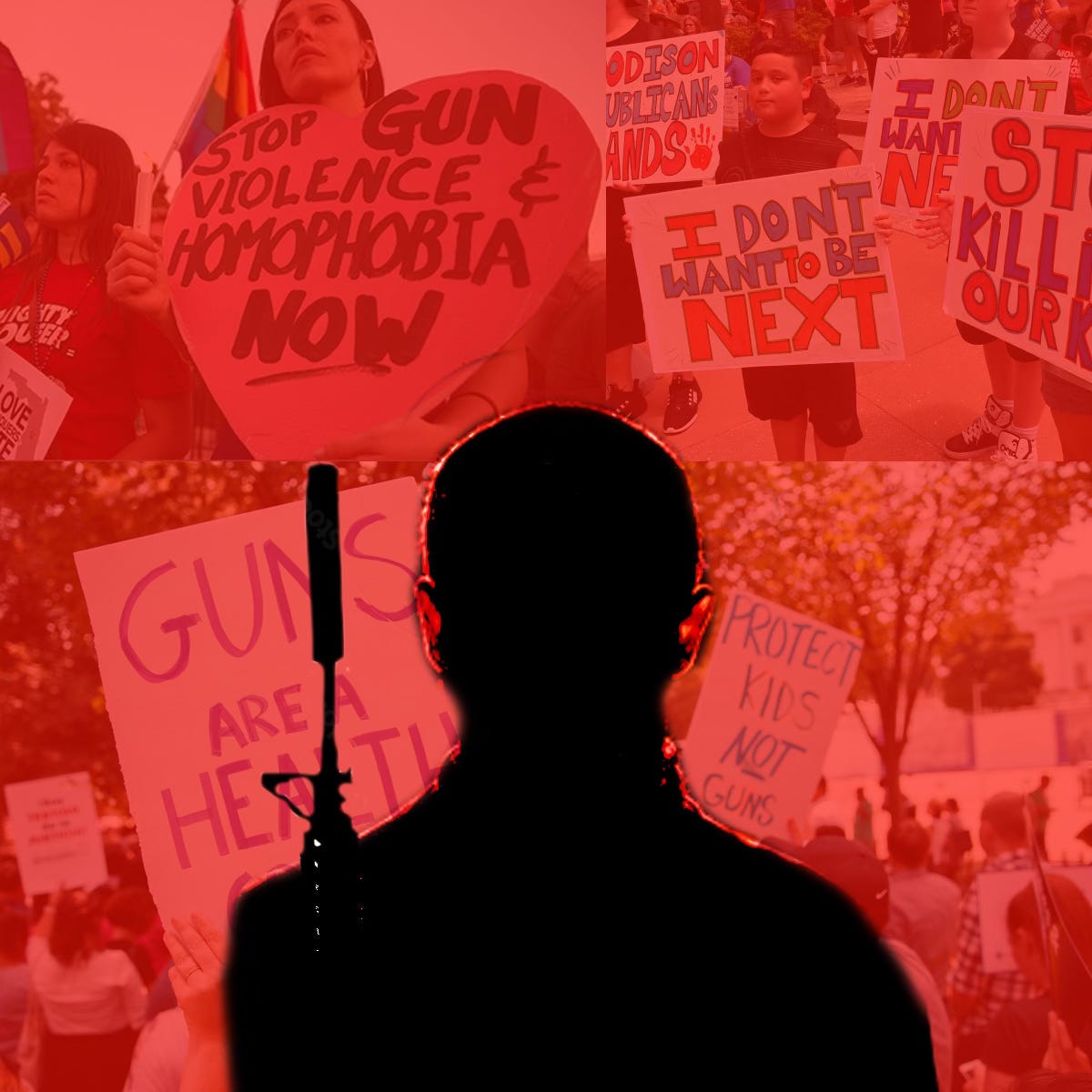Podcast Episode Details
Back to Podcast Episodes
The Gun Control Lie I Once Believed In
As a lifelong Democrat, I always thought the problem of gun violence was easy to solve. Just get rid of the guns. It was one of the most important issues for us as Bill Clinton rallied voters to the polls in 1992. But back then, it wasn’t mass shootings that we worried about. It was handguns.
Just look at this scene in Aaron Sorkin’s The American President, released in 1995, where Michael Douglas has to bury protecting the climate to pass a weapons bill, but by the end, he realizes he doesn’t have to sacrifice anything. He can and will get both.
Four years later, Eric Harris and Dylan Klebold would become famous by shooting up Columbine High School with illegally purchased weapons. That led to the renewal of the now-expired 1994 Assault Weapons Ban originally implemented after Patrick Edward Purdy killed five children at an elementary school in Stockton, California, in 1989.
We had a joke back then called “going postal,” referring to the same kind of person who would open fire on post offices or other office buildings. It seemed like men reacted violently to being rejected, either by a job or a woman. School shootings were rare. But Columbine hit differently than any tragedy that came before it.
It wasn’t just the crime itself; it was the pleasure the shooters took in carrying it out, performing for the security cameras, the casual cruelty, and later, how they became subversive icons. All of these years later, many of our early theories about them turned out to be wrong. They weren’t really bullied. For them, it was more about the thrill of killing and gaining fame for it.
By 1999, two significant changes had occurred in American society. The 24-hour news cycle, thanks to the O.J. Simpson trial, and the rise of the internet, which could give us our news even faster. However, it did something else as well. It allowed ordinary people to become famous overnight. That’s still true. Anyone can get famous for anything. Mass shooters also have their influencers and platforms.
But even more importantly, like the Columbine shooters, they are all caught up in the romance of building a mythology behind their planned shootings, their grand statements against society as they carry out their evil acts. They seem to have empathy for other shooters. They want to be like them. They want to be feared and remembered.
The more evil the deed, the greater the myth. The endgame always seems to be suicide, go out with a bang. Solving that problem, understanding it, trying to get ahead of it, proved too difficult, so we pivoted to the guns. Always the guns. Just get rid of the guns, and the problem will be solved.
Like these TikTokers:
I used to believe that. I also demonized people who carried them, and it was an easy excuse to blame the other side. What else is new? At least we want to do something about it, I would say. For this reason, I began studying mass shooters. I thought that if I could identify the one thing they had in common, maybe we could find a way to reach them before they decide to pick up a gun.
Every time I brought it up to anyone I knew on the Left, I would always get the same answer: it’s the guns. Take away the guns, solve the problem. They didn’t want to talk about anything else.
If you lived through the Oklahoma City bombing and 9/11, it seemed obvious that if people want to kill, there are other ways. Just look at suicide bombers, or people who drive trucks through crowds, or go on stabbing sprees. No, guns just made it easier, but taking them away is not only impossible, it doesn’t solve the problem.
In my research, I came across a site called GunViolence.org. They lay out just how rare mass shootings are compared to the rest of the shootings in America. I was shocked when I actually looked at the numbers.
Here is their ten-year review:
Gun deaths are part of the every
Published on 1 week, 3 days ago